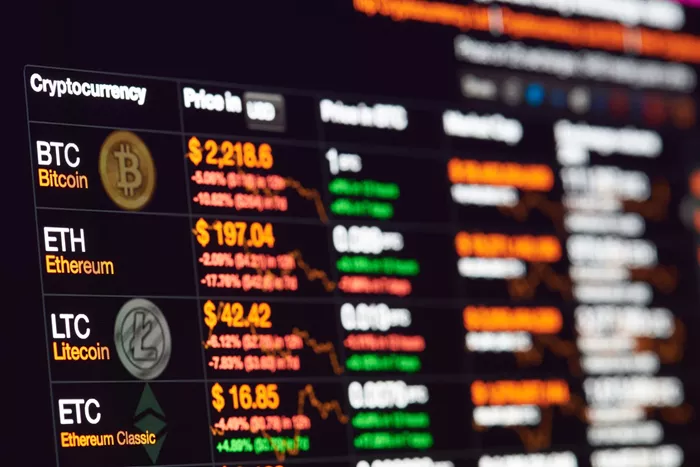The US dollar (USD) is the world’s primary reserve currency and a dominant force in global finance. Understanding how many US dollars are in circulation involves exploring various facets, including physical currency, electronic money, and the global use of the dollar in financial markets. This article will delve into these aspects to provide a comprehensive view of the USD’s circulation worldwide.
The Role of the US Dollar in the Global Economy
The US dollar holds a unique position in the global economy. It is used for international trade, held as a reserve currency by central banks, and serves as a benchmark for various financial instruments. The widespread use of the USD contributes significantly to its circulation.
The US Dollar as a Reserve Currency
The US dollar is the most widely held reserve currency globally. Central banks around the world keep substantial amounts of USD to manage their country’s exchange rates and support international trade. As of the latest data, approximately 60% of global foreign exchange reserves are held in US dollars. This massive reserve holding is a crucial factor in the circulation of the USD.
International Trade and the US Dollar
The USD is the dominant currency in international trade. Many commodities, such as oil, are priced and traded in US dollars. This practice, known as dollarization, increases the demand and circulation of the USD globally. Countries engage in trade transactions using the USD, further embedding it in the global economy.
Physical US Dollars in Circulation
The amount of physical US dollars in circulation is a significant component of the total currency in use. Physical currency includes banknotes and coins issued by the US Treasury and distributed by the Federal Reserve.
Tracking Physical Currency
The Federal Reserve publishes data on the amount of physical currency in circulation. As of recent estimates, there are over $2.2 trillion in physical US dollars circulating worldwide. This figure includes banknotes and coins used domestically and internationally.
Distribution of Physical Currency
While a large portion of physical US dollars circulates within the United States, a substantial amount is held abroad. Countries with unstable currencies often use the USD as a stable alternative, leading to significant holdings of US cash outside the US. This phenomenon is particularly prevalent in countries experiencing hyperinflation or political instability.
See Also: 7 Points to Tell You How the Foreign Exchange Market Works
Electronic US Dollars in Circulation
Beyond physical currency, electronic US dollars represent a significant portion of the total money supply. Electronic dollars include bank deposits, digital transactions, and other forms of non-physical money.
M1, M2, and M3 Money Supply
To understand the electronic circulation of US dollars, economists look at different measures of the money supply: M1, M2, and M3.
M1: Includes physical currency, demand deposits, and other liquid assets.
M2: Includes M1 plus savings deposits, time deposits, and money market funds.
M3: Includes M2 plus large time deposits, institutional money market funds, and other larger liquid assets.
As of the latest data, the M2 money supply stands at approximately $21 trillion. This figure encompasses both physical and electronic forms of USD, illustrating the vast amount of dollars in circulation.
Digital Payments and Transfers
The rise of digital payments and electronic transfers has increased the circulation of electronic US dollars. Online banking, mobile payments, and digital wallets facilitate the flow of USD globally. This trend is accelerating with advancements in financial technology, making electronic dollars an increasingly significant part of the total money supply.
The US Dollar in Financial Markets
The US dollar plays a pivotal role in global financial markets. It is a key currency in foreign exchange markets, international loans, and global investments.
Foreign Exchange Markets
The USD is the most traded currency in the foreign exchange market. It is involved in about 88% of all forex transactions. The high liquidity and stability of the USD make it a preferred choice for traders and investors, contributing to its extensive circulation.
International Loans and Investments
US dollars are widely used in international loans and investments. Many countries borrow in USD to benefit from lower interest rates and favorable terms. Additionally, global investors often prefer USD-denominated assets for their perceived safety and stability. These factors increase the demand and circulation of the USD in global financial markets.
Impact of the US Dollar’s Circulation
The extensive circulation of US dollars has several implications for the global economy and financial stability.
Economic Stability and Growth
The widespread use of the USD contributes to economic stability and growth. Countries holding USD reserves can manage their exchange rates more effectively and stabilize their economies. Furthermore, the availability of USD for trade and investment promotes global economic integration and growth.
Monetary Policy and Inflation
The US Federal Reserve’s monetary policy significantly impacts the circulation of US dollars. Decisions on interest rates, money supply, and other factors influence the amount of USD in circulation. These policies can affect global inflation rates, exchange rates, and economic conditions.
Geopolitical Influence
The US dollar’s dominance extends beyond economics to geopolitics. The ability to control the global reserve currency gives the United States considerable influence in international affairs. This power can be used to impose economic sanctions, provide financial aid, and support foreign policy objectives.
Challenges and Risks
Despite its dominance, the US dollar faces challenges and risks that could impact its circulation and global role.
Emerging Currencies
Emerging currencies, such as the Chinese yuan, are increasingly competing with the USD. Efforts by countries like China to internationalize their currency could reduce the USD’s dominance over time. This shift could alter the landscape of global currency circulation.
Cryptocurrencies and Digital Assets
The rise of cryptocurrencies and digital assets presents a new challenge to the US dollar. While these digital currencies are not yet mainstream, their growing acceptance and use could impact the demand for traditional currencies like the USD. Central banks are also exploring the development of digital currencies, which could further change the currency landscape.
Economic Policies and Debt
US economic policies and national debt levels influence the USD’s stability and attractiveness. High levels of debt and fiscal deficits can undermine confidence in the USD, potentially leading to reduced demand and circulation. Maintaining fiscal discipline and sound economic policies is crucial for sustaining the USD’s global role.
Future of the US Dollar in Circulation
The future of the US dollar in circulation will be shaped by various factors, including technological advancements, economic policies, and geopolitical developments.
Technological Innovations
Technological innovations, such as blockchain and digital currencies, will influence the future circulation of US dollars. These technologies could enhance the efficiency and security of transactions, potentially increasing the use of electronic USD. However, they also pose challenges in terms of regulation and integration with existing financial systems.
Global Economic Trends
Global economic trends, such as trade patterns, investment flows, and economic growth, will impact the demand and circulation of the USD. Continued economic integration and cooperation are likely to sustain the USD’s role in the global economy, but shifts in these trends could alter its circulation dynamics.
Geopolitical Shifts
Geopolitical shifts, including changes in alliances, conflicts, and power dynamics, will also affect the USD’s circulation. The ability of the US to navigate these shifts and maintain its economic and political influence will be crucial for sustaining the USD’s global role.
Conclusion
Understanding how many US dollars are in circulation involves examining physical currency, electronic money, and the USD’s role in global finance. The extensive circulation of the USD is driven by its use as a reserve currency, its dominance in international trade and financial markets, and its role in digital transactions. While challenges and risks exist, the future of the USD in circulation will be shaped by technological innovations, economic policies, and geopolitical developments. As the global economy evolves, the US dollar’s circulation and influence are likely to remain significant, reflecting its enduring role in global finance.
Related topics:



























